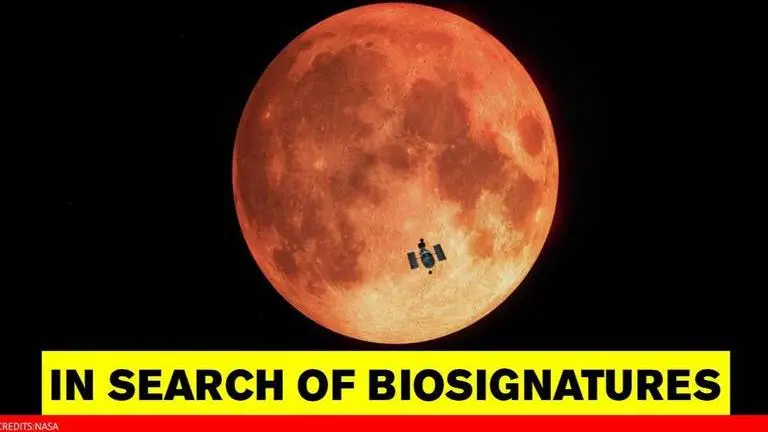Updated 9 August 2020 at 08:40 IST
NASA's Hubble Telescope uses moon as mirror to search for signs of extraterrestrial life
While a number of similar studies have been done before, NASA informed that this is the first time a total lunar eclipse was captured at ultraviolet wavelengths
- Science News
- 2 min read

NASA astronomers used the moon as a mirror to study earth during a total lunar eclipse in search of signs of life on exoplanets. The US space agency informed that the scientists used Hubble Space Telescope and detected earth's own brand of sunscreen -- the ozone -- in the atmosphere.
NASA said, "This method simulates how astronomers and astrobiology researchers will search for evidence of life beyond Earth by observing potential "biosignatures" on exoplanets (planets around other stars)".
While a number of similar observations have already been done previously, NASA informed that this is the first time a total lunar eclipse was captured at ultraviolet wavelengths and from a space telescope. The US space agency said that Hubble detected the strong spectral fingerprint of ozone, which absorbs some of the sunlight.
The scientists noted that ozone is important to life because it is the source of the protective shield in the earth’s atmosphere. They further said that on earth, photosynthesis over billions of years is responsible for our planet's high oxygen levels and thick ozone layer which is why ozone or oxygen could be a sign of life on another planet.
Advertisement
Allison Youngblood of the Laboratory for Atmospheric and Space Physics in Boulder and the lead researcher of the Hubble’s observation explained, “Finding ozone is significant because it is a photochemical byproduct of molecular oxygen, which is itself a byproduct of life”.
Strongest detection till date
The recent study is believed to have helped researchers shape their search for signs of life around exoplanets. The Hubble Space Telescope recorded ozone absorbing some of the sun's ultraviolet radiation that passed through the edge of earth's atmosphere during a lunar eclipse that occurred on January 20 to 21, 2019. The scientists said that the recent study represents the strongest detection of the molecule to date.
Advertisement
Youngblood said, “One of NASA's major goals is to identify planets that could support life. But how would we know a habitable or an uninhabited planet if we saw one? What would they look like with the techniques that astronomers have at their disposal for characterizing the atmospheres of exoplanets? That's why it's important to develop models of Earth's spectrum as a template for categorizing atmospheres on extrasolar planets”.
(Image: NASA/Website)
Published By : Bhavya Sukheja
Published On: 9 August 2020 at 08:40 IST
